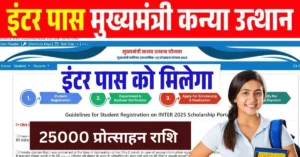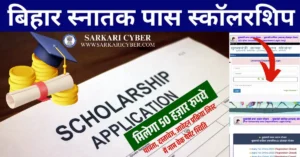Today, let’s unpack NPAs(NPA in Banking: What It Means) in simple terms, zoom in on heavyweights like HDFC, ICICI, and Kotak, and chat about those sneaky early warnings called SMA. By the end, you’ll feel like a pro spotting red flags in bank reports. Let’s dive in—grab your chai, and don’t worry, no math overload here!
Table of Contents
- NPA Explained: The Basics
- Gross vs. Net NPA: Breaking It Down
- NPA Snapshot: How Do HDFC, ICICI, and Kotak Stack Up?
- Provision Coverage Ratio (PCR): The Bank’s Safety Net
- SMA: Your Early Warning System for Loan Troubles
- Wrapping Up: Why This Matters for You as an Investor
NPA Explained: The Basics
Picture this: Banks are like that generous friend who spots you cash for your startup dream, charging a bit of interest as thanks. They take deposits from us regular folks, lend it out, and pocket the spread—that’s their bread and butter, called the Net Interest Margin (NIM). But what if your buddy ghosts you on repayments? That’s the NPA nightmare for banks.
Non-Performing Assets (NPAs) are loans or advances where the borrower hasn’t coughed up interest or principal for 90+ days. It’s the RBI’s way of flagging “uh-oh” situations, forcing banks to report these to keep things transparent. As an investor, eyeing NPAs tells you if a bank’s got too much “bad debt” dragging down profits. Back in 2020, during the pandemic, NPAs spiked across India, hitting public sector banks hard—think SBI’s ratios jumping over 5%. Private players like our trio here? They dodged the worst, thanks to tighter lending checks. But with economic bumps in 2025, like rising fuel costs, it’s worth a fresh look.
Gross vs. Net NPA: Breaking It Down
Alright, let’s make this fun with a story from my early writing days. I once freelanced for a finance blog and crunched numbers on a buddy’s loan portfolio. Imagine lending ₹10 lakh to 10 mates, expecting ₹1 lakh EMIs monthly. But ₹10,000 vanishes because three flakes out. That full ₹10,000? Gross NPA—the raw, ugly total of stuck loans.
Now, smart lenders like banks stash away “provisions” (think emergency fund) for such flops. Say you’ve buffered ₹4,000; your real hit is ₹6,000— that’s Net NPA, the after-provision pain. Gross shows the full mess, Net reveals resilience. In banking lingo, Gross NPA Ratio is (Gross NPAs / Total Advances) x 100, and Net is similar but post-provisions. Pro tip: Aim for under 2% Gross—anything higher, and it’s time to side-eye that stock.
NPA Snapshot: How Do HDFC, ICICI, and Kotak Stack Up?
Time for the juicy stats! I’ve pulled the freshest Q1 FY26 numbers (ended June 30, 2025) from bank filings—because nothing’s worse than outdated advice. These private champs keep NPAs low, but let’s see who’s shining.
| Bank | Gross NPA Ratio (GNPA) | Net NPA Ratio (NNPA) |
|---|---|---|
| HDFC Bank | 1.33% | 0.43% |
| ICICI Bank | 1.67% | 0.39% |
| Kotak Mahindra Bank | 1.48% | 0.34% |
Provision Coverage Ratio (PCR): The Bank’s Safety Net
Okay, provisions are cool, but how much cushion? Enter PCR—the % of Gross NPAs already “covered” by provisions. Higher = better shock absorber. Like, if a bank’s PCR is 70%, they’ve set aside 70 paise per rupee of bad loans.
Here’s the latest for our banks (Q1 FY26):
| Bank | Provision Coverage Ratio (PCR) |
|---|---|
| HDFC Bank | ~70% |
| ICICI Bank | 78.5% |
| Kotak Mahindra Bank | 77% |
SMA: Your Early Warning System for Loan Troubles
Now, the cool part: Banks aren’t asleep at the wheel. Enter Special Mention Accounts (SMA)—RBI’s early radar for stressed loans, before they hit NPA status. It’s like your phone’s low-battery alert, giving time to charge up (or recover funds).
SMA kicks in for overdue payments, categorized by delay:
| SMA Category | Overdue Period | What’s the Vibe? |
|---|---|---|
| SMA-0 | Up to 30 days | Minor hiccup—easy fix, low risk. |
| SMA-1 | 31-60 days | Yellow flag—borrower’s sweating, monitor closely. |
| SMA-2 | 61-90 days | Red alert—default looming, recovery mode on. |
Post-90 days? Boom, NPA. Catch: Reporting’s mandatory only for exposures ≥ ₹5 crore via CRILC (Central Repository of Information on Large Credits). For our banks, SMA levels are low—HDFC’s SMA-2 under 0.5% of advances last quarter. It’s a game-changer; in my cyber-finance gigs, I’ve seen how SMA data helps investors predict NPA spikes early.
Wrapping Up: Why This Matters for You as an Investor
Whew, that was a quick spin through banking’s underbelly! NPAs aren’t just scary acronyms—they’re your crystal ball for bank health. With HDFC, ICICI, and Kotak keeping ratios tight (all under 2% Gross) and PCRs beefy, they’re primed for growth amid 2025’s steady GDP hum. But hey, markets love surprises—always cross-check on RBI’s site or bank investor pages.
From one ex-college kid to another: Start small, track these metrics quarterly, and diversify. Lost a bit on a high-NPA bank stock in 2022? Me too—lesson learned the hard way. Got questions? Hit the comments on sarkaricyber.com. Let’s chat finance over virtual coffee. Stay savvy! 😎











